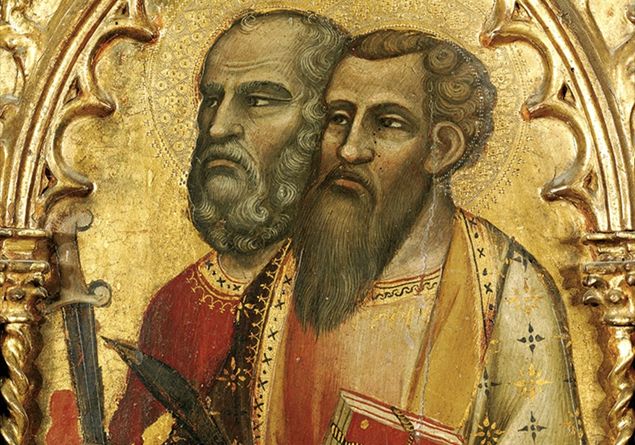
Judas, also known as “Thaddaeus” (which means “magnanimous”) or “Lebbaeus” (“courageous”) is the namesake of the traitor, brother of Saint James the Less and therefore a close relative of Jesus. He is named in Matthew 10.3, Mark 3.18, Luke 6.16 and in the Acts of the Apostles 1.13, but nothing is known about his apostolate.
At the last supper he asked the Lord for explanations about his manifestation, and he replied: “If anyone loves me, he will keep my word, and my Father will love him, and we will come to him and make our home with him.”.
If Nikephoros Callisto is believed, Judas would have preached the Gospel in Judea, Samaria, Idumea, Syria and Mesopotamia, and would have suffered martyrdom in Emessa. Some writers have confused him with the disciple Addai. Today he is revered as the patron saint of desperate cases.
Under the name of Judas we have a short Epistle in the New Testament, which is one of the seven Catholic Epistles. The author calls himself “Judas, servant of Jesus Christ and brother of James”.
Most commentators therefore agree in recognizing one of the twelve apostles, that is, the one called Thaddeus or Lebbeus. The epistle is addressed to the Christians of Asia Minor, coming from Judaism, with the aim of preventing them against false doctrines. It was probably written in the East, between 62 and 66, before the destruction of Jerusalem.
The martyrdom of the apostles Simon and Judas Thaddeus with the allegory of the chariot of death; German painting from the school of Stephan Lochner (15th century) preserved in the Vatican Pinacoteca.
San Simone, patron saint of fishermen
Saint Simon, nicknamed “Zealot” by Luke (which means “fervent, observant of the law”, but perhaps he calls him this because he had fought in the anti-Roman group of Zealots), is called “Canaanite” by Matthew and Mark. He is the patron saint of fishermen, and it is disputed whether he is one of the “brothers” of the Lord: the order of the catalogs of the apostles, where Simon appears between the brothers James the Less and Thaddeus, or after them, before the traitor, it would seem so.
But then we wonder why Luke, while he says Thaddeus is the brother of James, does not say the same about Simon. There is a lack of credible later information, which makes the identification doubtful. More generally, according to various traditions, Simon would have been bishop first in Jerusalem and then in Pella, or he would have evangelized Samaria and died as a martyr and buried in Persia.
Because they celebrate together
Saint Jude Thaddeus was massacred by pagan priests in a cruel, violent and inhumane manner.
In traditional iconography he is represented as the is holding a book that symbolizes the word of God that he announced, and a halberd, a kind of spear which was the instrument used in his martyrdom. His relics are currently venerated in St. Peter’s Basilica in Rome. Its liturgical feast is celebrated on October 28probable date of his martyrdom in 70 AD In Brazil, devotion to Saint Jude Thaddeus is relatively recent. It arose at the beginning of the 20th century and soon achieved great popularity. He is invoked as the saint of the desperate and the afflicted, the saint of unsolved causes, of lost causes.
San Simone in the Golden Legend and in the Roman Martyrology he is associated with Saint Judas Thaddeus, with whom he is considered he preached the Gospel in Egypt and Mesopotamia and suffered martyrdom together according to some writers. This is why the Church celebrates them together on October 28.









